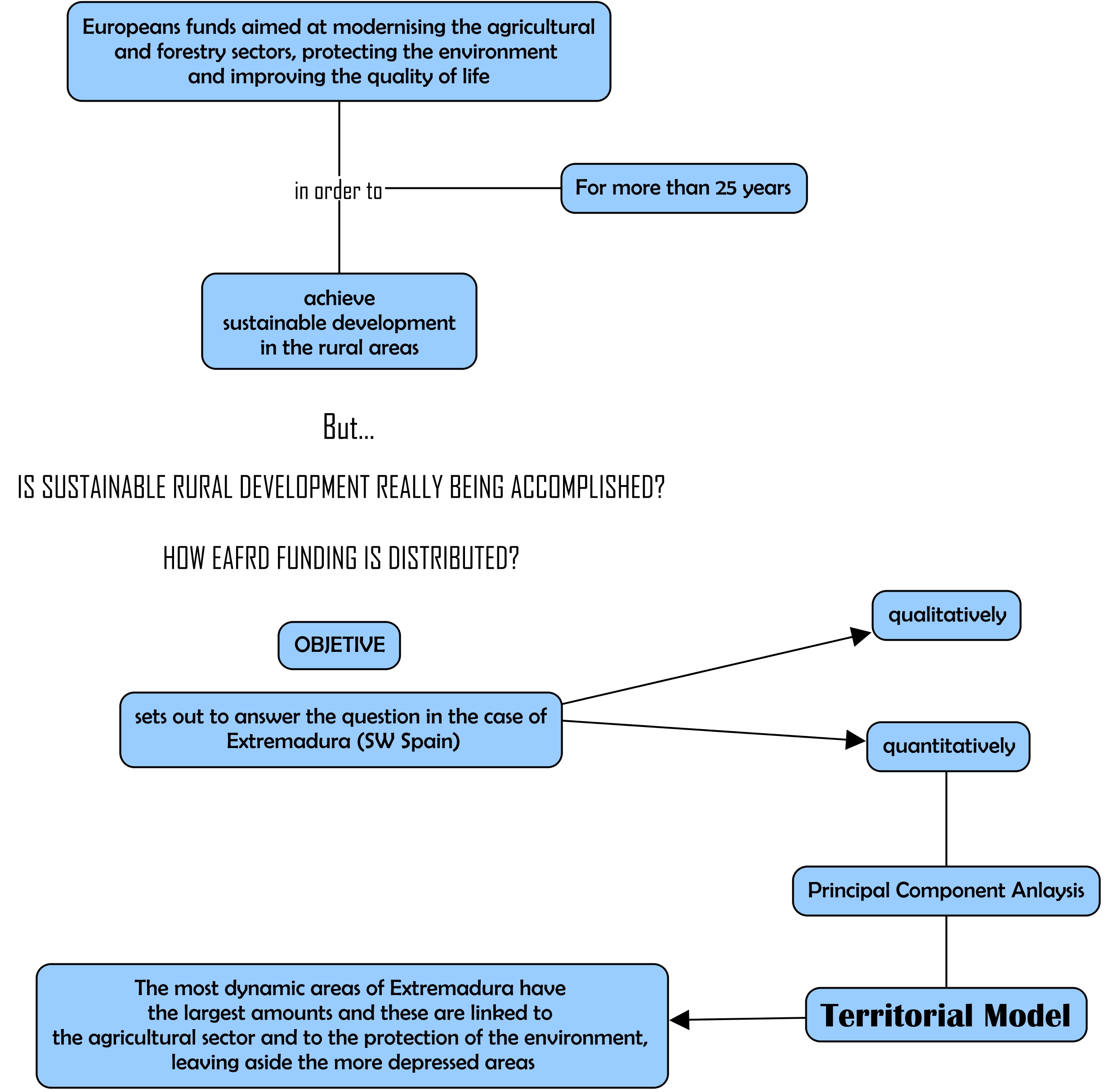The European Commission has been striving to achieve sustainable development in its rural areas for more than 25 years through funds aimed at modernizing the agricultural and forestry sectors, protecting the environment and improving the quality of life. But is sustainable rural development really being accomplished? This study sets out to answer this question in the case of Extremadura, a Spanish territory with Low Demographic Density and a Gross Domestic Product still below 75 % of the European average. Both qualitative and quantitative methodology have been employed, using a Principal Component Analysis the result of which has provided us with a model which shows how various behaviors coexist in the region in view of the distribution of current funding from the EAFRD. The most dynamic areas have received the largest amounts of funding and these are linked to the agricultural sector and to the protection of the environment, leaving aside the more depressed areas and the implementation of the LEADER Approach as well. Therefore, we have come to the conclusion that the current rural development in Extremadura is not sustainable enough.

